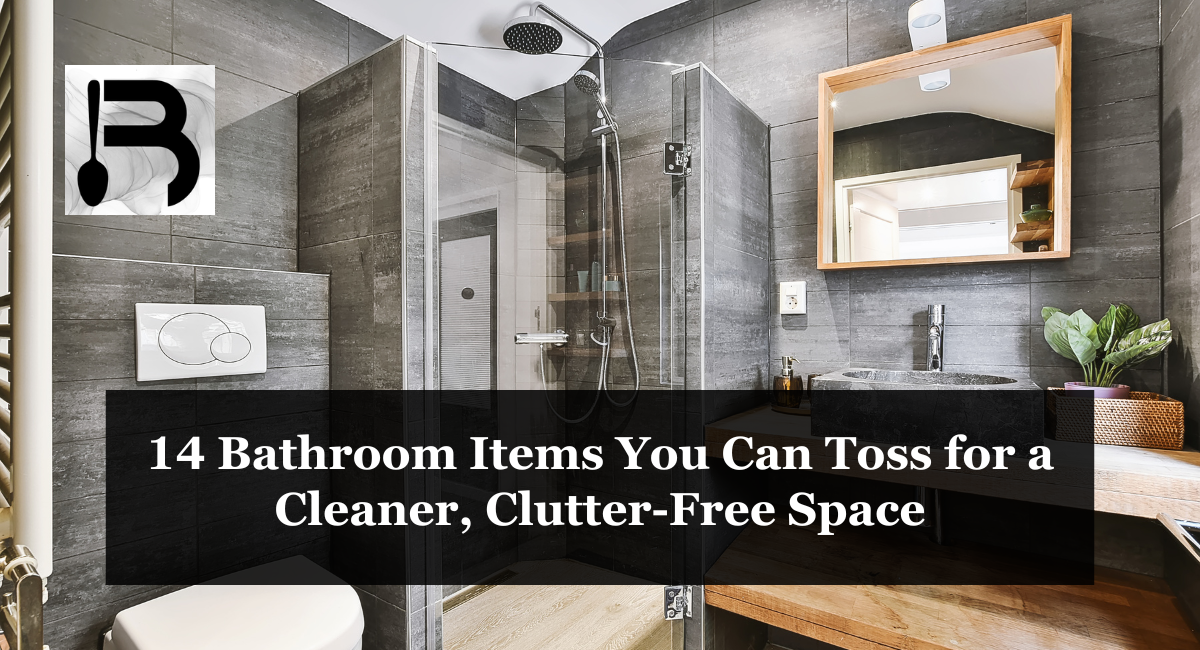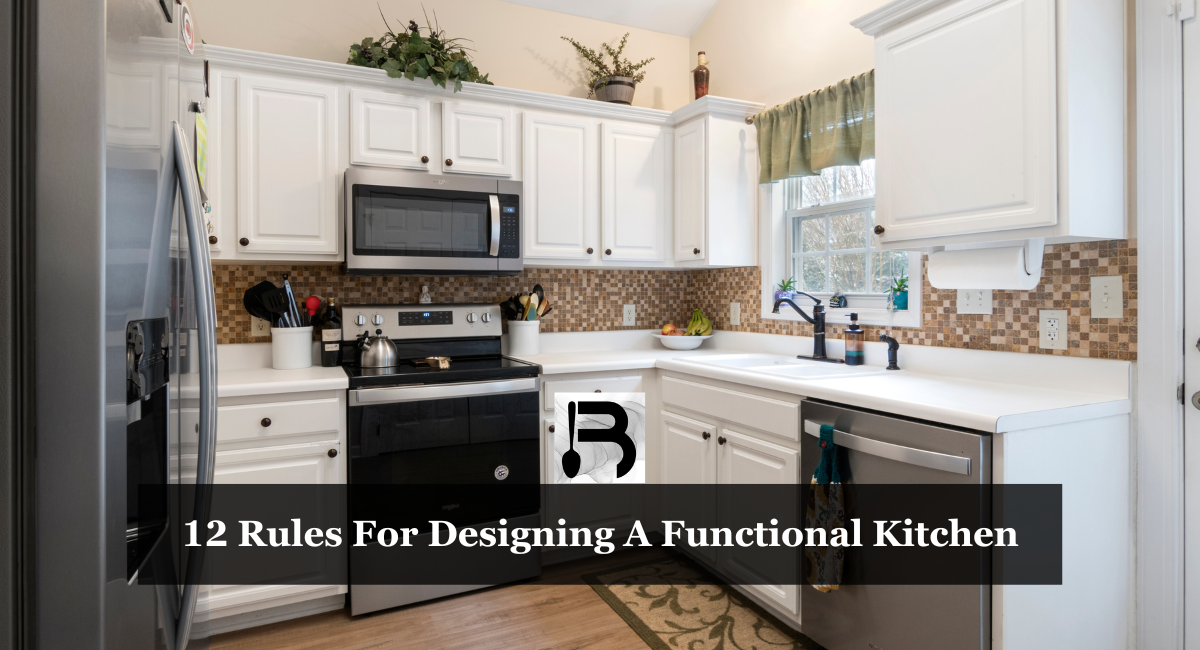Designing a kitchen is more than just selecting appliances and choosing cabinet colors. It’s about creating a heart for your home – a place where functionality meets comfort and style.
The kitchen is not only a space for preparing meals but also a central hub for gathering, dining, and making memories. To achieve this, certain principles must guide the design process.
These principles, or rules, ensure that your kitchen is not only aesthetically pleasing but also practical and efficient.
In this article we will explore these 12 Rules For Designing A Functional Kitchen
12 Rules For Designing A Functional Kitchen
Designing a functional kitchen involves a combination of aesthetics and practicality. Here are 12 essential rules to consider:
1. Efficient Layout
The layout is critical for efficiency. Popular layouts like the L-shaped, U-shaped, or galley kitchens are designed to minimize unnecessary movement. The kitchen work triangle concept, positioning the fridge, sink, and stove in a triangular layout, minimizes walking distance between them, enhancing efficiency in meal preparation.
2. Ample Storage
Adequate storage solutions can greatly enhance the functionality of a kitchen. This includes full-extension drawers that allow easy access to the contents, overhead cabinets that utilize vertical space, and custom solutions like corner cabinets with carousel shelves. Organizing tools such as drawer dividers and pull-out spice racks can also be immensely helpful.
3. Quality Countertops
Countertops are not just work surfaces; they contribute significantly to the kitchen’s aesthetic. Durable materials like granite, quartz, or reinforced laminate can withstand the rigors of kitchen use while being easy to maintain. The choice of colour and texture can also complement the overall design theme.
4. Adequate Lighting
Good lighting is essential. Overhead lights provide general illumination, under-cabinet lights brighten workspaces, and accent lights like pendants can highlight dining areas or islands. Natural lighting should also be maximized wherever possible for a welcoming ambiance.
5. Proper Ventilation
Proper ventilation is key to maintaining air quality. A range hood that vents outside is ideal. It’s also important to consider the noise level of the ventilation system to ensure it’s not disruptive.
6. Ergonomic Design
The kitchen should be tailored to fit the user’s height and reach. This includes the right height for countertops and placing commonly used items within easy reach. Adjustable or pull-down shelves can be incorporated for high cabinets.
7. Quality Appliances
Invest in appliances that offer longevity, efficiency, and suit your cooking habits. Energy-efficient models can save on utility bills. The placement of appliances should complement the kitchen’s workflow.
8. Easy-To-Clean Surfaces
Surfaces that resist stains and are easy to clean can make kitchen maintenance simpler. This includes non-porous countertops, backsplashes with minimal grout lines, and easy-to-sweep flooring materials.
9. Functional Island
An island can be a versatile addition, offering extra countertop space, storage, and seating. It can also house a sink, dishwasher, or cooktop. Ensure there is enough room around the island for comfortable movement.
10. Accessible Pantry
A well-organized pantry can save time and reduce clutter. Features like pull-out drawers, adjustable shelving, and clear labeling can make items easy to find and reach.
11. Safety First
Safety considerations include ensuring there’s adequate space for movement, especially around hot appliances, rounded counter edges, non-slip flooring, and child-proofing elements if necessary.
12. Personal Touch
Finally, adding personal elements creates a space that feels uniquely yours. This could be through colour schemes that match your taste, decorative tiles for a backsplash, unique cabinet hardware, or even displaying personal collections or artwork.
In conclusion, the art of designing a functional kitchen lies in balancing practicality with personal style. By following these 12 rules, you can create a space that not only caters to your culinary needs but also reflects your personality and lifestyle.
A well-designed kitchen is more than just a cooking area; it’s a dynamic space that fosters creativity, brings families together, and makes everyday tasks more enjoyable.
With thoughtful planning, attention to detail, and a focus on functionality, your kitchen can become the inviting and efficient heart of your home, where memories are made and shared for years to come.
-
How To Use Google Flights ‘Search Anywhere’ Tool To Find Cheap Fares

If you’re a traveler looking for flexibility and affordability, Google Flights offers an incredible tool that can help you discover the best flight deals without a specific destination in mind. Here’s how to make the … Read more
-
How to Eliminate Dust From Every Surface in Your Home

Dust. It seems to appear out of nowhere, settling on furniture, coating electronics, and clinging stubbornly to seemingly untouched corners. This ever-present enemy of a clean home can not only be an eyesore but also … Read more
-
Top 10 National Parks in US to Visit for Breathtaking Fall Foliage

As summer wanes and the days grow crisp, nature puts on a dazzling display across the United States. Vibrant hues of red, orange, and yellow paint the landscapes, transforming ordinary vistas into scenes straight out … Read more
-
14 Bathroom Items You Can Toss for a Cleaner, Clutter-Free Space

Bathrooms can easily become battlegrounds of clutter. Between overflowing shelves and cabinets crammed with forgotten products, creating a serene and organized space can feel like an impossible dream. But fear not! By taking a critical … Read more
-
The 10 Best Friendships in Disney Animated Movies

Disney animated movies have a special way of capturing our hearts. They whisk us away to fantastical worlds filled with adventure, laughter, and of course, unforgettable characters. But what truly elevates these stories are the … Read more

